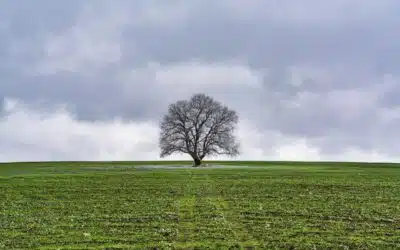Beyond Déjà Vu

Written By Denis Martin
Blog | Reflections on life | What about me?
In “Beyond Déjà Vu”, Denis tackles the illusory reality and the need for a path to tread even if everything is already perfect at the Base.
.
Series: The spiritual path in Dzogchen
Beginning the Dzogchen path
Beyond Déjà Vu
6 a.m., the clock radio plays I Got You Babe, … the disillusioned Phil Connors (played by Bill Murray in the movie “Groundhog Day” directed by Harold Ramis) has an unpleasant feeling … as if his day is going to be exactly the same as the day before.
Have you ever had that dizzying feeling of living the same day over and over again? These brief moments of lucidity often provoke a certain uneasiness, furtive for fear of confronting them too closely…
Like Phil, who finds himself trapped in this endless Groundhog Day, we may be tempted to react with irritation, resignation or sublimation. Although this tragicomic superman may seem inspiring at first, the gentle music of time will ultimately overtake him… and the cycle will begin again (“cyclic wandering”, tib. khorwa, khor ba), who knows… maybe as a groundhog in his burrow…
So how do we get through to the other side of the screen and get to the heart of this illusory reality without falling into Phil’s trap? The Dzogchen tradition teaches that appearances are the play of the mind, temporary manifestations with no existence of their own. However, this illusory reality is not a problem in itself, that needs to be shattered. On the contrary, the basis of all manifestation is the energy or radiance of universal compassion (tib. thougdjé, thugs rje).
“Without the vision at the Base, we will continue to evolve within illusory conditions, thinking we are on a path or practicing Dzogchen, lulled by the gentle music of time which will ultimately overtake us…”
If this tradition is called “Great Perfection” (tib. Dzogpa Chenpo, rdzogs pa chen po), it is because all elements are inherently perfect from the standpoint of their primordial nature. Contrary to what Phil thinks, there is absolutely nothing to change, nothing to transform, nothing to accumulate or acquire. In the Tibetan Dzogchen tradition, we often refer to the flight of the Garuda to represent the state of the Great Perfection: “suspended in the void, hovering in the primordial nature of my [our] own luminous, empty and immensely free mind “, as Mila Khyentse describes it (see the article High Diving). Pretty inspiring, isn’t it?
…But how is it possible that if this state is at the base and there is nothing to change, we still find ourselves “cocooned” – dare we say it paradoxically – in our very tangible illusions?
Except for a few rare beings who have the “capacity” (inhereted from previous lives’ training) to realize the nature of the mind in an instant (tib. chig charwa, cig car ba), like the Garuda who takes flight directly, we will generally have to walk a path… but which one ? the one that will lead us to a result that is nothing other than the realization that everything is already there, at the base. In other words, we will have to follow an illusory path in order to put an end to the illusion and remain naturally in the primordial Base of reality.
Do you have a headache? That’s perfectly normal and a great sign!
At the risk of oversimplifying, it can be said that there is radical Dzogchen and a gradual approach to it. The former is the direct path followed by those who have mastered the flight of the Garuda (great Bodhisattvas or Mahasattvas). The latter is the path that one must take in order to be prepared for the radical approach, in order to avoid ending up in free fall, like the chicks of barnacle goose (watch the video (1.55′), it’s vertiginous!).
The gradual path, however, is not a smooth, well-trodden path where all you have to do is apply certain meditation methods that will suddenly put an end to the illusion (see the article The Toy Train). Despite the prevailing circumstances and the accompanying sense of urgency we may feel, it is impossible to spare the time for observation and reflection necessary for the maturation of the Dzogchen vision. It is essential that the vision serve as the foundation for our action and our practice of the Great Perfection. Moreover, this vision cannot be revealed without the connection and transmission of a ‘being of enlightenment’ who has realized it himself and who will be able to guide us on our own path to realization.
Without the vision at the Base, we will continue to evolve within illusory conditions, thinking we are on a path or practicing Dzogchen, lulled by the gentle music of time which will ultimately overtake us… and the cycle will begin again, who knows… maybe as a groundhog in his burrow…
More Posts
Panic on Board
In “Panic on Board” from Grégoire, the sea is presented as a playground for experiencing the natural freedom of the mind. Nothing less!
The Dead Sea
In “The Dead Sea,” Mila Khyentse reminds us that even the Dead Sea carries life. For the Dzogchen tradition, death is in life.
Sickness
In “Sickness,” Maréva talks about the discomfort of illness, which can become a source of training and a link to the master and the nature.




